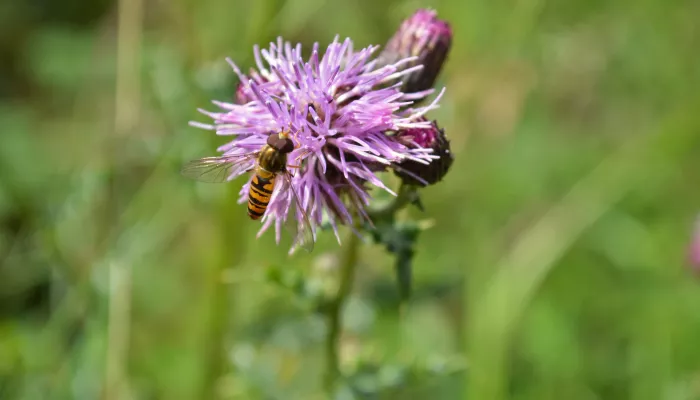| Length | 0.9-1.2cm |
About
The marmalade fly is a very common hoverfly that can be seen in gardens, parks and sunny woodlands. Adults are on the wing right through the year, although appear in large numbers in the summer. They feed on nectar, gathering together on flowers like tansy, ragwort and cow parsley. The larvae are predators of aphids. As well as being a common breeding fly, in some years, huge numbers migrate here from the continent when they can be seen busily feeding on flowers near the coast.
How to identify
The marmalade fly is our most common and familiar hoverfly, identified by its orange body with thick and thin black bands across it.
Did you know?
The marmalade fly gets its name from its orange colour, and the different sized black bands across its body: 'thin cut', 'thick cut', just like marmalade!
How people can help
Our gardens are a vital resource for wildlife, providing corridors of green space between open countryside, allowing species to move about. In fact, the UK's gardens provide more space for nature than all the National Nature Reserves put together. So why not try planting native plants and trees to entice birds, mammals and invertebrates into your backyard? To find out more about encouraging wildlife into your garden, visit our Wild About Gardens page: a joint initiative with the RHS, there's plenty of facts and tips to get you started.

